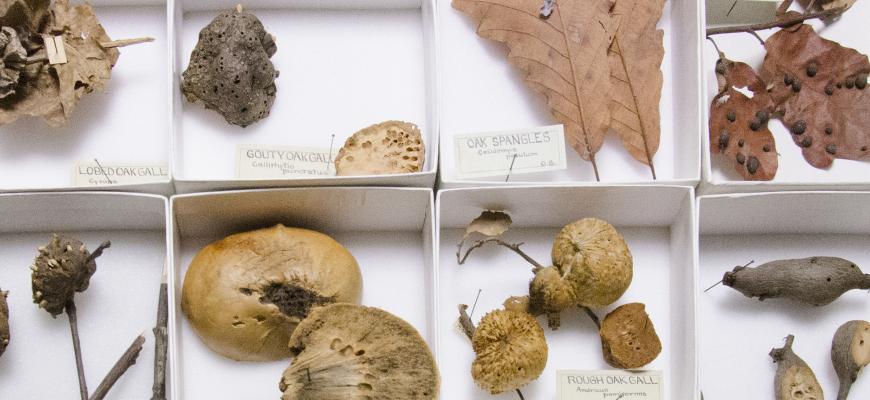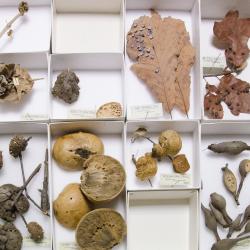The New York State Museum has an extensive collection of plant galls. The collection—the finest of its kind—fills 72 drawers, each 18-by-18-inches. The collection contains plant galls that were dried and preserved, most in the early 20th century but some as early as the 1850s. They have been continuously cared for and are in excellent condition.
Plant galls comprise tissue that the plant produced as a defense against an invading organism. The plant tissue reacts to an invader by encapsulating the invader in a gall. The gall can be very ornate and is highly characteristic of the specific species of invader. A polyphagous (literally “many foods”) gall insect will attack numerous plant species, and each plant species will produce a different-looking gall even though the invading insect is the same identical species.
The gall collection also includes the associated insects. Dr. Ephraim Porter Felt (1868–1943), the third state entomologist for New York, described more than 200 species of gall flies. He preserved the plant gall that was associated with the emerging fly. This field of study requires botanical expertise as well as a certain tenacity since many flies take a year to emerge.





